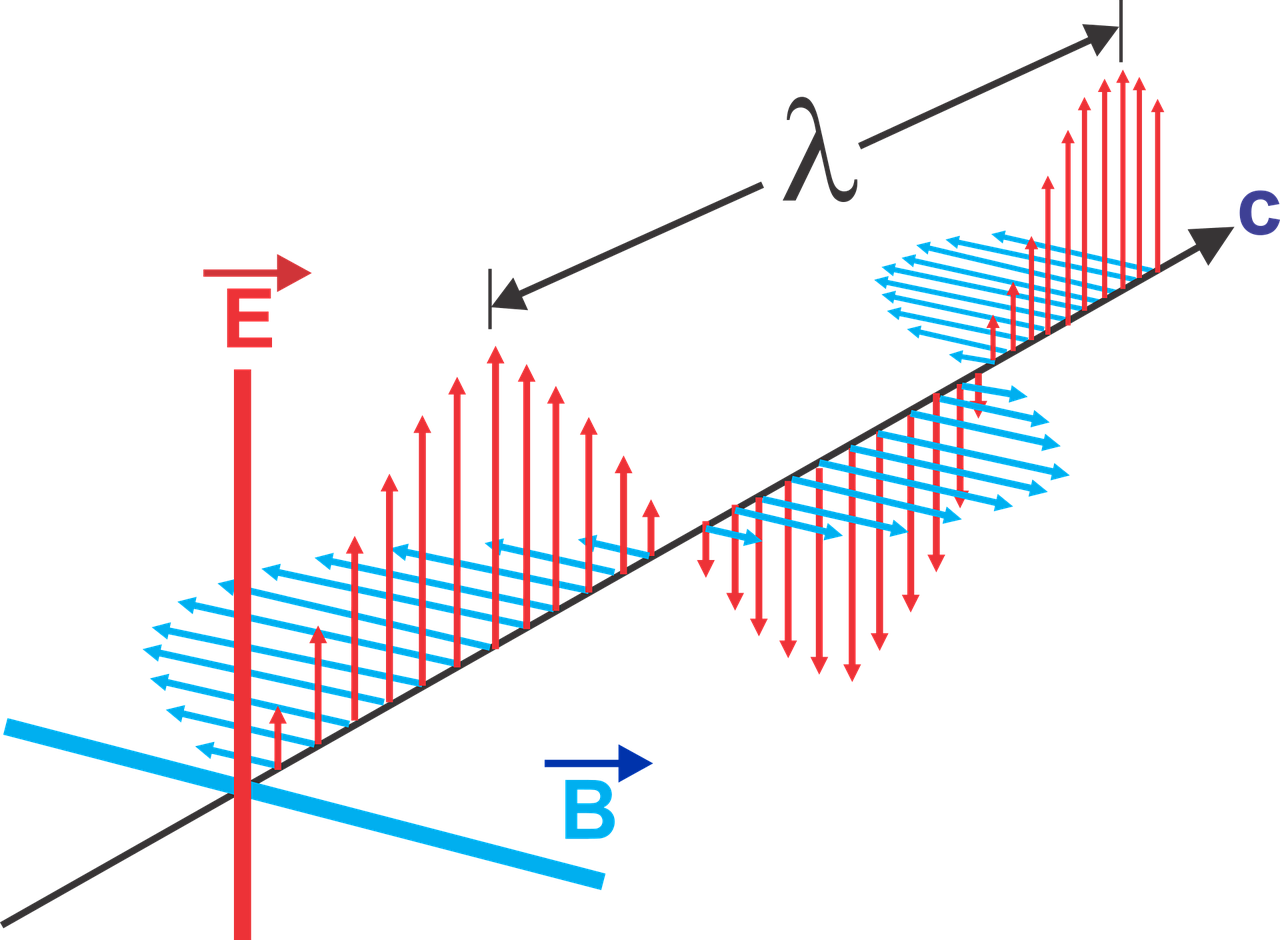Imagine a world where we have the power to manipulate light, sound, and waves in ways we never thought possible. Welcome to the exciting realm of metamaterials, a field that is revolutionizing our understanding of physics and opening up a myriad of possibilities. From invisibility cloaks to acoustic lenses, these extraordinary materials are reshaping how we interact with our environment and paving the way for groundbreaking technological advancements. In this article, we will explore the fascinating world of metamaterials and delve into the incredible potential they hold for shaping the future of light, sound, and waves. Get ready to embark on a mind-bending journey into the realm of scientific innovation!

1. Introduction to Metamaterials
1.1 Definition of Metamaterials
Metamaterials are a class of artificially engineered materials that exhibit unique properties not found in natural materials. These materials are designed to manipulate electromagnetic waves, sound waves, and other types of waves in ways that were previously thought impossible. By structuring the materials at subwavelength scales, metamaterials can control and steer waves with unprecedented precision.
1.2 Brief History of Metamaterials
The concept of metamaterials was first proposed by the physicist Victor Veselago in 1968, but it wasn’t until the late 1990s that researchers were able to fabricate materials with the desired properties. In 2000, the first metamaterials with a negative refractive index were created, opening up new possibilities for manipulating light waves. Since then, the field of metamaterials has rapidly progressed, with breakthroughs in areas such as cloaking, perfect absorption, and superlensing.
2. Properties and Characteristics of Metamaterials
2.1 Negative Refraction and Index of Refraction Control
One of the most fascinating properties of metamaterials is their ability to exhibit negative refractive index. In traditional materials, the refractive index determines the angle at which light waves bend when they pass through the material. However, with metamaterials, this behavior can be reversed, allowing light to bend in the opposite direction. This property has transformative implications for optics, enabling the creation of superlenses and invisibility cloaks.
2.2 Perfect Absorption and Cloaking
Metamaterials also possess perfect absorption capabilities, meaning that they can absorb all incident electromagnetic waves. This property has applications in the development of efficient solar cells, as well as in the creation of cloaking devices that can render objects invisible by redirecting light around them. By manipulating the structure and composition of metamaterials, scientists can control the absorption and reflection of waves, opening up possibilities for advanced camouflage and stealth technologies.
2.3 Superlensing and Subwavelength Imaging
Superlensing is another remarkable characteristic of metamaterials. Unlike conventional lenses, which are limited by the diffraction limit in their ability to resolve fine details, metamaterials can overcome this limit and achieve subwavelength imaging. This means that objects smaller than the wavelength of light can be imaged with unprecedented precision. Superlenses could revolutionize fields such as medicine, microscopy, and nanotechnology by enabling high-resolution imaging of biological molecules and nanostructures.
3. Applications of Metamaterials in Light Manipulation
3.1 Photonic Crystals and Enhanced Light-Matter Interactions
Metamaterials play a crucial role in the development of photonic crystals, which are periodic structures that can control the flow of light on a subwavelength scale. By tailoring the properties of photonic crystals using metamaterials, researchers can create materials with novel optical properties, such as complete bandgaps and enhanced light-matter interactions. These materials have applications in areas such as optical computing, telecommunications, and sensors.
3.2 Plasmonics and Surface-Enhanced Spectroscopy
Plasmonics is a field that combines nanophotonics and metamaterials to manipulate light at the nanoscale. By harnessing the interaction between light and surface plasmons, researchers can enhance the sensitivity and resolution of spectroscopic techniques. Metamaterials enable the precise control of plasmonic properties, enabling advancements in surface-enhanced Raman spectroscopy (SERS) and other techniques that have applications in chemical sensing, bioimaging, and environmental monitoring.
3.3 Optics and Nanophotonics
Metamaterials have significant implications for optics and nanophotonics, allowing for the development of versatile and tunable devices. By designing and fabricating structures at the nanoscale, researchers can tailor the properties of metamaterials to exhibit desired optical behaviors, such as negative refraction, dispersion control, and polarization manipulation. These capabilities pave the way for the creation of advanced optical components, including ultrathin lenses, waveguides, and filters.
4. Applications of Metamaterials in Sound Manipulation
4.1 Acoustic Cloaking and Sound Absorption
Beyond their impact on light, metamaterials have the potential to revolutionize the field of acoustics by controlling sound waves. Acoustic cloaking, inspired by the concept of optical invisibility, involves manipulating sound waves to render objects acoustically invisible. Metamaterials can also be designed to absorb sound efficiently, leading to advancements in noise reduction technologies, architectural acoustics, and medical imaging.
4.2 Acoustic Lenses and Perfect Acoustic Absorbers
Similar to their optical counterparts, acoustic lenses made from metamaterials can focus sound waves with unprecedented precision. These lenses can be used in applications such as ultrasound imaging and therapeutic ultrasound. Metamaterials also offer the possibility of perfect acoustic absorbers, materials that can absorb all incident sound waves without reflecting any energy back. Such absorbers could be used to improve the efficiency of concert halls, soundproof rooms, and audio devices.
4.3 Sound Wave Steering and Reflection Control
Metamaterials enable the manipulation of sound waves in ways that were previously impossible. By tailoring the structure and composition of metamaterials, scientists can steer sound waves around obstacles, controlling the direction and intensity of the sound. This property has implications for applications such as sonar systems, underwater communication, and architectural acoustics. Additionally, metamaterials can be used to control sound reflections, allowing for the precise shaping of room acoustics and soundscapes.

5. Applications of Metamaterials in Wave Manipulation
5.1 Wireless Power Transfer and Energy Harvesting
Metamaterials have the potential to revolutionize wireless power transfer and energy harvesting. By manipulating electromagnetic waves, researchers can develop metamaterial-based devices that can efficiently and wirelessly transfer power between devices. This technology could eliminate the need for physical connectors and enable the charging of electronic devices from a distance. Furthermore, metamaterials can be used to enhance and optimize energy harvesting systems, improving their efficiency and scalability.
5.2 Antennas and Microwave Devices
The properties of metamaterials offer significant advantages in the field of antenna design and microwave devices. By tailoring the behavior of electromagnetic waves, researchers can create antennas that are more efficient, compact, and capable of multi-frequency operation. Metamaterials also enable the development of microwave devices with improved performance, such as filters, phased arrays, and beamforming systems. These advancements have applications in wireless communication, satellite technology, and radar systems.
5.3 Terahertz Technology and Communication Systems
Metamaterials hold promise for the advancement of terahertz technology, a frequency range that lies between the microwave and infrared regions of the electromagnetic spectrum. Terahertz waves have unique properties that make them attractive for various applications, including imaging, spectroscopy, and wireless communication. By tailoring the properties of metamaterials, researchers can create terahertz devices with enhanced functionalities, enabling advancements in security screening, drug detection, and high-speed communication systems.
6. Challenges and Future Directions in Metamaterials Research
6.1 Fabrication Techniques and Scalability
One of the main challenges in metamaterials research is the fabrication of these complex structures at large scales with high precision. Current fabrication techniques, such as electron beam lithography and focused ion beam milling, are time-consuming and expensive. Researchers are actively working on developing scalable and cost-effective fabrication methods that can produce metamaterials with desirable properties at commercial scales.
6.2 Losses and Efficiency
Metamaterials often suffer from high losses due to inherent material properties and fabrication imperfections. These losses result in reduced efficiency and limit the practical applications of metamaterials. Researchers are focusing on minimizing losses by optimizing the material composition and structure, as well as developing novel metamaterial designs that mitigate losses and improve efficiency. Balancing losses and efficiency remains an ongoing challenge in the field.
6.3 Multifunctionality and Integration
As metamaterials continue to evolve, researchers are exploring ways to make them more versatile and multifunctional. Currently, most metamaterial devices are designed for specific functionalities, but there is growing interest in developing metamaterials that can perform multiple functions simultaneously. Additionally, integrating metamaterials with existing technologies and systems poses challenges in terms of compatibility and scalability. Future research will focus on developing integrated platforms that harness the full potential of metamaterials across various applications.

7. Conclusion
Metamaterials are reshaping the future of light, sound, and wave manipulation. With their extraordinary properties and characteristics, these artificially engineered materials have paved the way for remarkable advancements in optics, acoustics, and wireless communication. From the control of light waves with negative refraction to the manipulation of sound waves for cloaking and imaging, metamaterials offer endless possibilities for innovation. Although challenges remain in fabrication, losses, and multifunctionality, ongoing research and technological advancements are bringing us closer to unlocking the full potential of metamaterials and their transformative applications in various fields.













